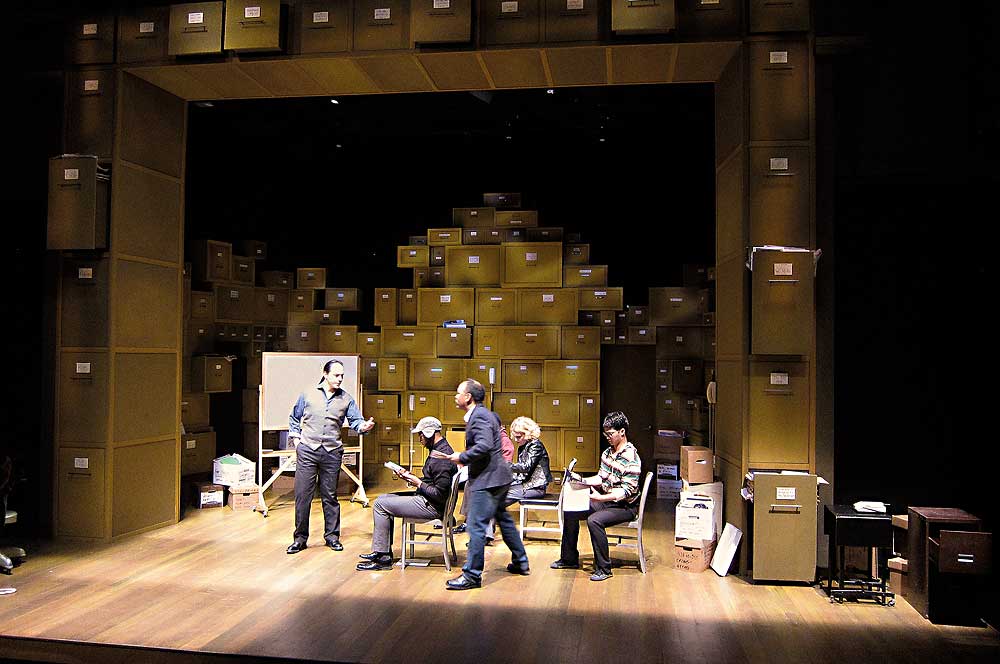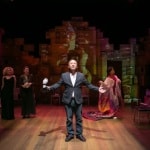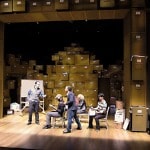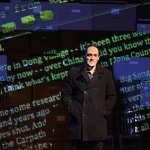David Henry Hwang’s Yellow Face is a quasi-autobiographical satire exploring racial identity and the pitfalls of political correctness. In it, the playwright (renamed DHH) accidentally casts Caucasian actor Marcus in an Asian role in his play. The Theater J production of Yellow Face marks the second collaboration between director Natsu Onoda Power and designers Luciana Stecconi and Jared Mezzocchi. They talked with American Theatre about integrating set design, projections and the concept of face.
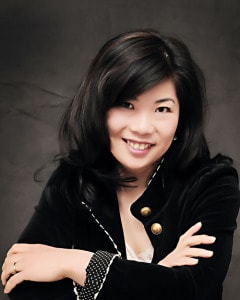
Natsu Onoda Power, DIRECTION: I knew from the beginning that I would be using projection in some way, because the play deals so much with media and journalism. And as I talked with Luciana, we realized that the play is, in a way, about documents—bank documents, national security documents, headshots, scripts. So we thought: What if the set was all documents in boxes? And that gave us the concurrent theme of faces—the idea of boxes is similar to the idea of faces, in that we like to categorize people in certain ways and put them in boxes.
I thought Marcus’s e-mails from the Guizhou Province should take place in a metaphorical space that is radically different from the rest of the play. The play’s a little bit cryptic—you don’t know where the e-mails are coming from until the last moment, when you realize they’re made up!—so, thanks to the craft of lighting designer Dan Covey, we made some radically different lighting choices for the e-mails. Everything else in the show was lit in rectangular boxes, which would intersect with other boxes, but Marcus’s e-mails were the only place where the whole stage became one environment.
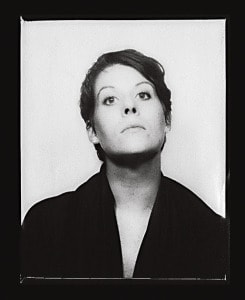
Luciana Stecconi, SCENIC DESIGN: From the moment Natsu and I sat down, it was very clear we didn’t want a realistic approach. We agreed on a unit set—one that doesn’t really change or move. The play has many locations—we go from West Coast to East Coast and to different times—but we wanted to concentrate on one environment that could support the play. So we created this set with many, many drawers—about 180 to 200 of them, counting those on the proscenium arch and the upstage walls—that could also work as projection surfaces. Some of them were actual practical drawers, so we could put props inside: newspaper articles, a scrapbook, files and folders. DHH’s office was almost like a casting office, because it is so important to the play—the process of casting and identities. And, with the help of projections, we were able to be able to be clear that we are in distinct locations and in different moments in time. We wanted to add some humor into the design, and the unexpected action of opening all these drawers kept the play from being too serious.
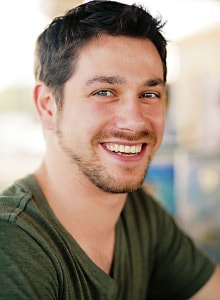
Jared Mezzocchi, PROJECTION DESIGN: I mapped out all the drawers initially with white squares, then I built different white scrolls—left to right, top to bottom, right to left. It was a great way to lead the eye to the next part of the show. If someone was stage left, we could scroll to stage right, leading the audience’s eyes somewhere else. It allowed us to jump in time. With the e-mail scenes, I ended up typing the whole e-mail out and giving it a Hotmail look, because the show was set in the late ’90s. We started really literally—Marcus is talking about entering the Guizhou Province, and we show what he’s talking about. And as he goes through his monologues, the images get blurrier, so at the end, you’re seeing blurry silhouette gestures. The text is up there each time, but the images become more and more abstract as the show goes on. Then, at the very end, Marcus turns upstage and walks toward the abstracted Dong Country. We then took every face that was referenced in the show and mapped each one to a drawer, and did a slow-zoom Ken-Burns-y cross-fade, so it’s like Marcus is one of the faces of the show. The drawers became a huge repository of every face in the show.
David Henry Hwang’s Yellow Face ran Jan. 29—Feb. 23 at Theater J in Washington, D.C., under the direction of Natsu Onoda Power. The production featured scenic design by Luciana Stecconi, lighting design by Dan Covey, sound design by Chris Baine, costume design by Debra Kim Sivigny, props design by Joshua Rosenblum, projection design by Jared Mezzocchi, stage management by Roy A. Gross, assistant stage management by Jessica Soriano and Ruth Anne Watkins, board operation by Kevin Laughon and Jay Chiang, and dramaturgy by Steve Spotswood.

